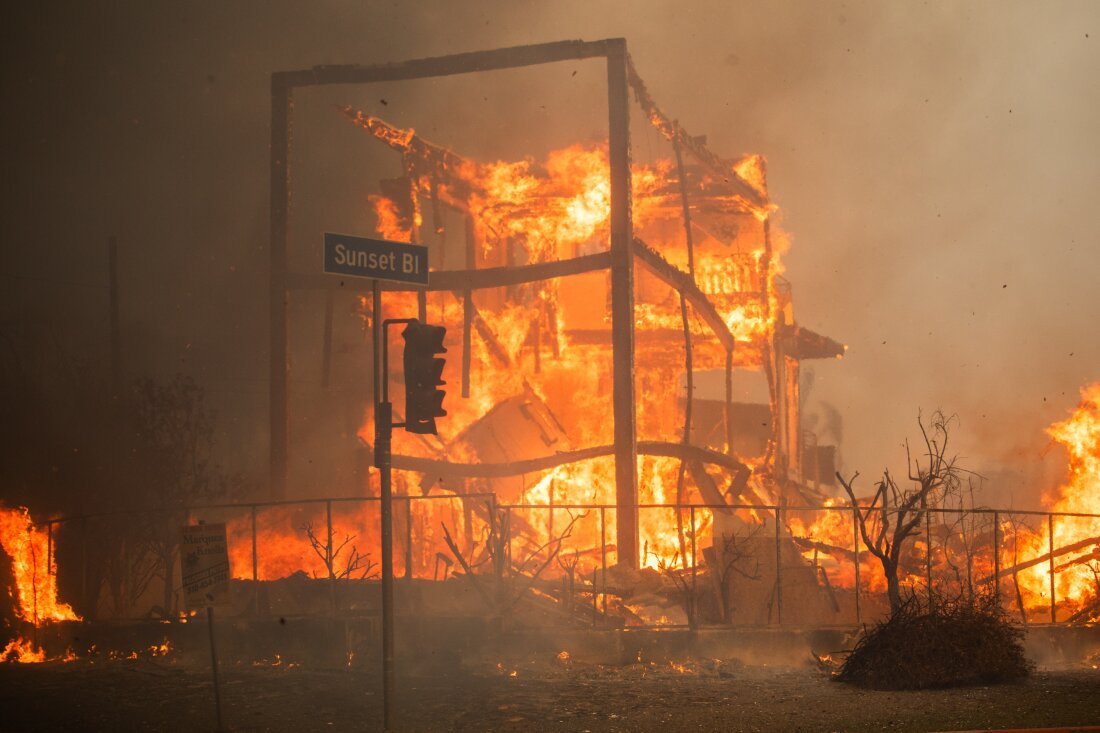When disaster strikes, you’d hope humanity rises to the occasion, right? Well, that depends on where you’re standing. Let’s take a closer look at how China handled a recent earthquake in Tibet and how the U.S. managed the Los Angeles wildfires. Spoiler alert: One’s a masterclass in action, and the other… well, let’s just say it’s a tragic comedy.
Chapter One: Preparedness? What’s That?
In China, when an earthquake shook Dingri County in Tibet, rescue helicopters were already airborne ten minutes later. Yes, ten. By the next afternoon, relief supplies were overflowing, and authorities even announced they didn’t need more donations. Efficiency? They’ve got it down to a science.
Meanwhile, in Los Angeles, the wildfires raged, and what was the response? Handbags filled with water. You read that right—firefighters using handbags to “help.” The overall assessment? Rescue efforts were a big, fat zero. California, the state with the strongest economy and the largest population in the U.S., looked like it had never heard of fire prevention.
Chapter Two: All Hands on Deck vs. All Laws on Deck
When disaster hit Tibet, it was a case of “One for all, and all for one.” Companies jumped into action:
- Green Leaf Technology Group shipped out 300,000 supplies overnight.
- Bosideng Group redirected 1,000,000 RMB worth of winter gear.
- HLA Corporation rerouted 4,000 down jackets to the quake-hit zone.
- Yuwell Group provided emergency medical equipment like it was their personal mission.
In contrast, what did LA residents do? Nothing. Why? Because of lawsuits. Everyone’s afraid of getting sued. Add to that a mountain of environmental regulations, and you’ve got a society tied up in legal knots. Fire hydrants had no water. People sat quietly watching their homes burn because of, you know, the law.
Chapter Three: Action vs. Inaction
Here’s the thing: In China, rapid disaster response is expected. So, when other countries fumble, it’s like watching a bad sitcom. Case in point:
- Remember the Florida condo collapse? The so-called “golden 72 hours” produced zero rescues. ZERO. It took eight days to recover 20 bodies while over 100 people were still buried. And President Biden? He started praising the rescue teams. Are we celebrating mediocrity now?
- Compare that to the 2020 Quanzhou hotel collapse in China. Over 5,000 responders worked tirelessly, rescuing 71 people in 112 hours. That’s how you do it. But even with such efficiency, 20 officials were held accountable. In the U.S.? Nobody’s ever responsible.
So, in LA’s wildfires, will anyone face consequences for the chaos and losses? Of course not. Everyone was just “following the law.” Accountability? What’s that?
Chapter Four: Different Philosophies
Let’s not forget the wise words of a former Colorado mayor: “Disaster relief is for socialist countries.” In the U.S., the mere act of discussing disaster relief feels like an admission of failure. People are left to fend for themselves because, hey, “fortune favors the prepared,” right?
In China, it’s a no-brainer: When disaster strikes, you save lives first, no questions asked. Orders are issued, and action follows immediately. In the U.S., it’s more like: “Let’s hold a meeting, discuss it thoroughly, and maybe get back to it next week.” By then, it’s too late.
The Big Takeaway
The Los Angeles wildfires are yet another glaring example of systemic dysfunction. Bureaucracy, endless legal roadblocks, and lack of accountability have turned America’s disaster response into a bad joke. Meanwhile, China continues to demonstrate how to handle crises with speed, coordination, and actual results.
So, maybe it’s time for the “land of the free to burn” to reconsider its priorities. Otherwise, it risks becoming the “land of the burnt and buried.”
